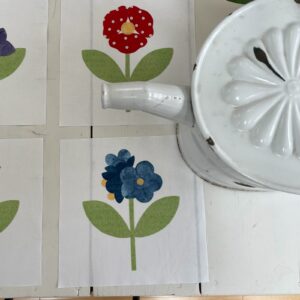by Great Joy Studio | Jul 30, 2020 | Quilting & Fabric
Hello Everyone.
It’s time!
•
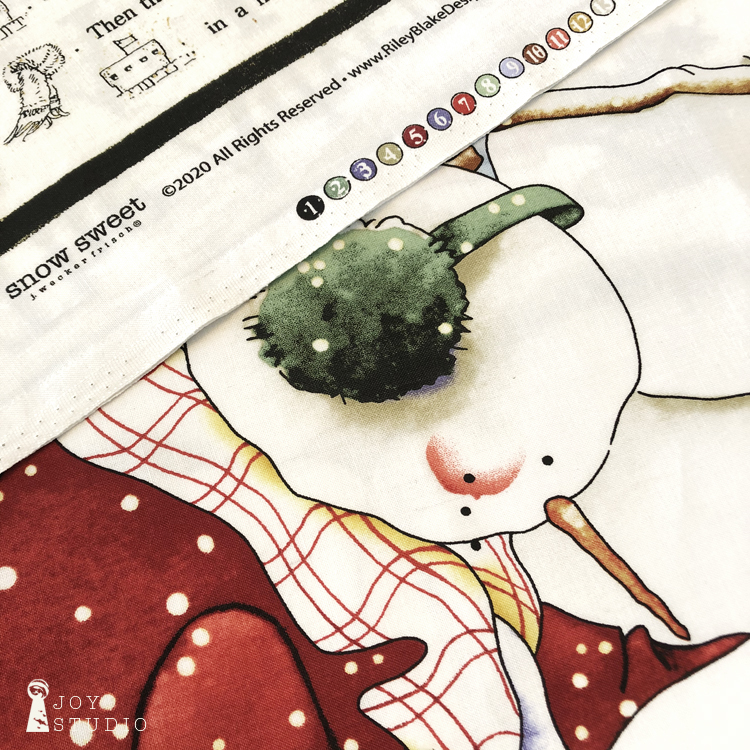
•
To start the
SNOW-A-LONG,
featuring SNOW SWEET and PAINTERS PALETTE fabrics
from Riley Blake Designs.

I would like to remind all of you that this is only my second SAL so I welcome your comments, questions and constructive critiques.
Now, let’s have some fun in the snow!!
•
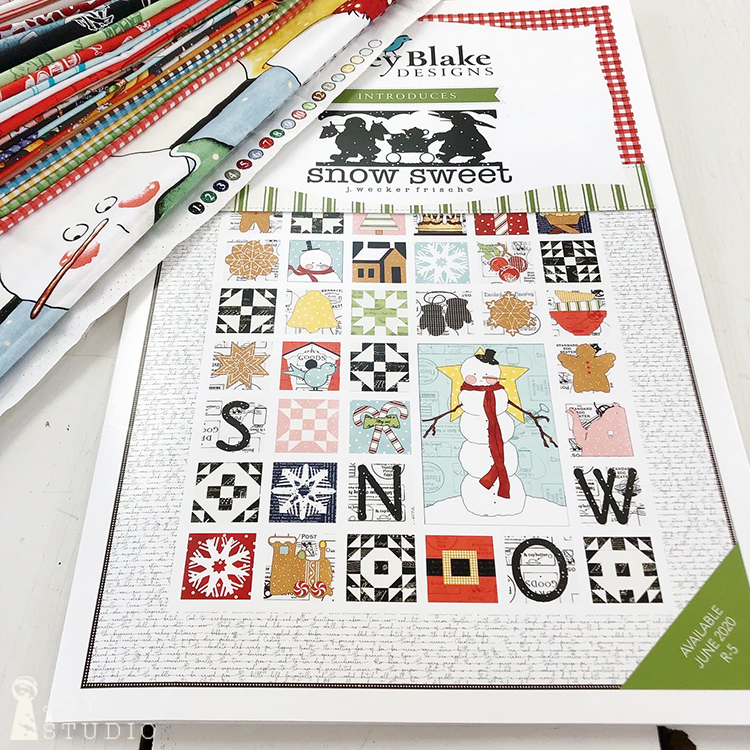
•
Some of you may not have received your patterns yet due to a last minute edit however, you will be able to catch up quickly in this first week. When you get them, be sure to read through the entire instructions section before you begin.
This week we will be making your appliqué pieces and cutting your block background fabrics.
Begin by taping together the six Star Snowman pages. A light box or taping to a convenient window works very well for this. Match up the registration marks located on each page. You may choose to trim the edges of your six page snowman template first to eliminate gaps in the line art. As you can see in the pictures below, we did not.
•



•
Take your assembled Star Snowman and all of the other appliqué template sheets and begin tracing onto your fusible web, paper side up. Start with the largest pieces first such as Star Snowman, his scarf and snow base. We like to tape down the pieces so they do not move during this process.
•
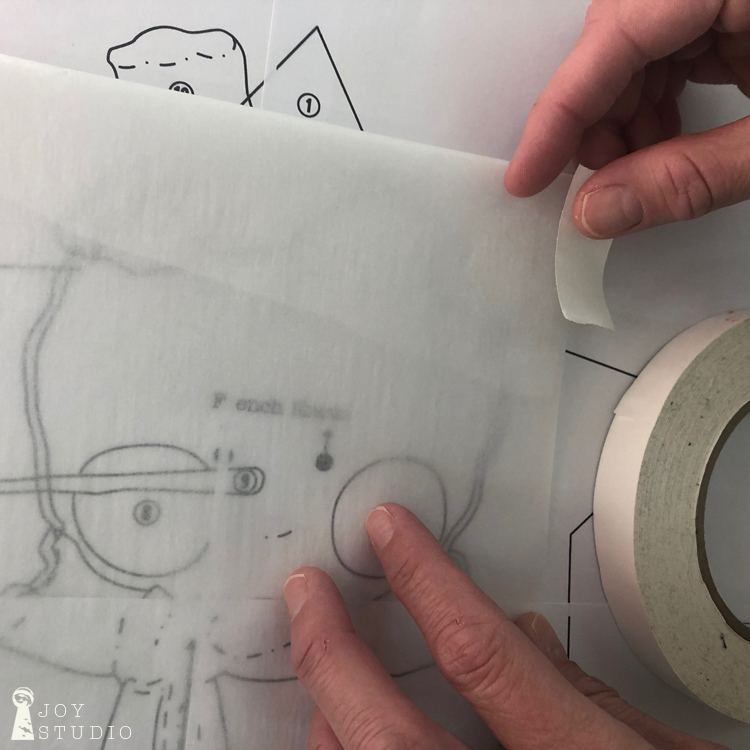
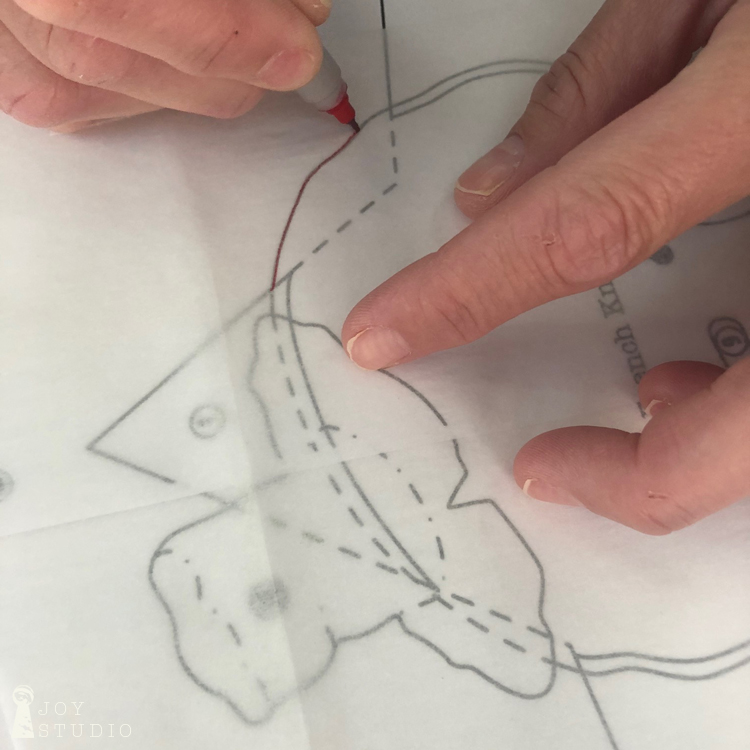
•
Every shape that you see on the templates will be an individual ‘glue’ piece so we numbered them as well by block for easier organization and quick identification when fusing. The appliqué designs are already in mirror image. Once all are traced, rough cut them apart. You will have something that looks like these:
•
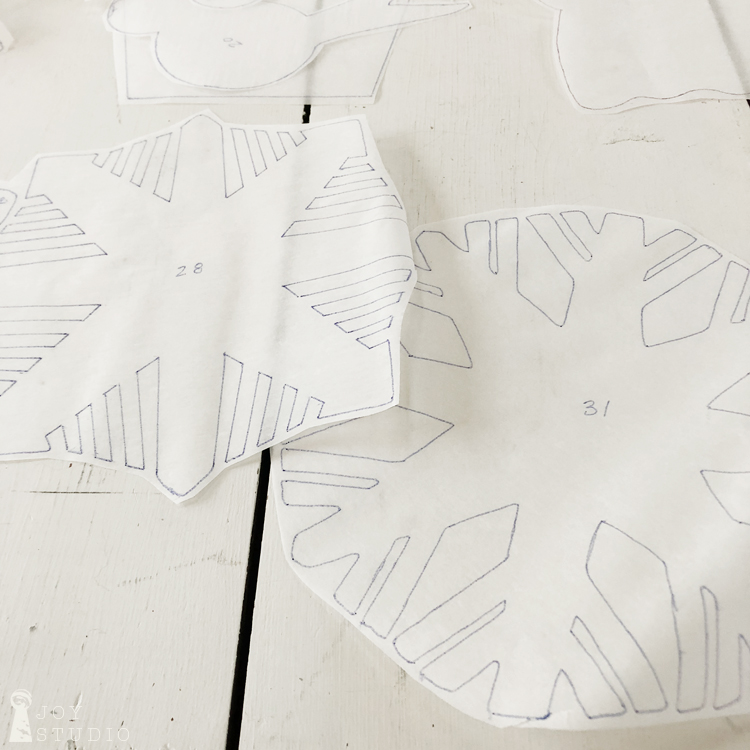
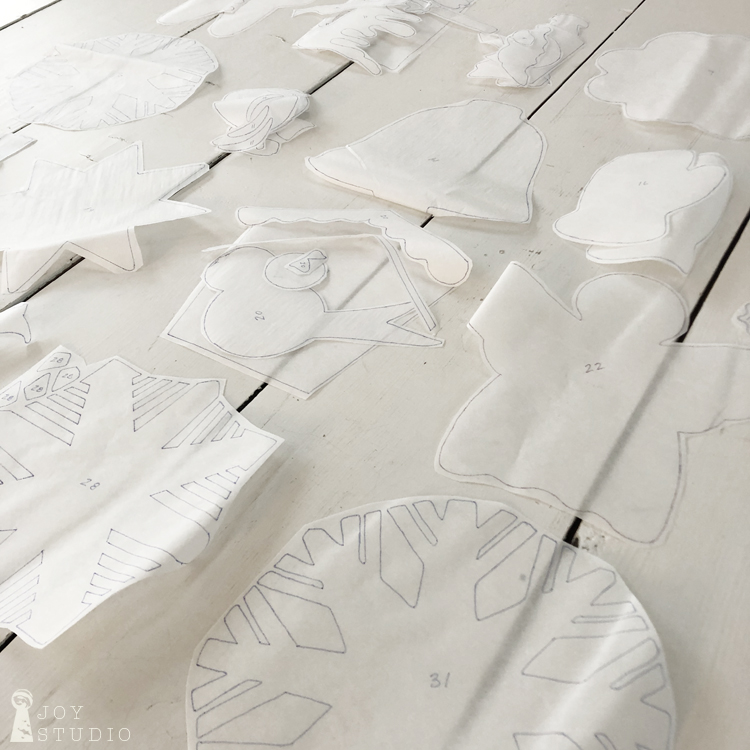
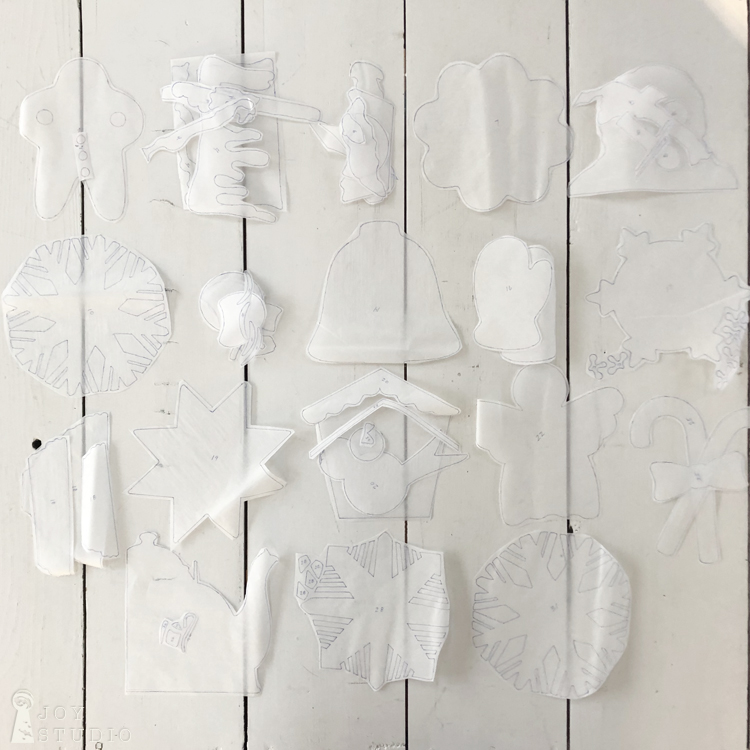
•
Next: For all white and light colored appliqué fabrics you will want to add a second layer of fusible interfacing to mask the block background fabric you are fusing to. We did this with the Snowman and his base, snowflakes and bell.
•

•
Rough cut a piece of interfacing a little larger than your fusible pieces. Once again start with the largest items first. As you can see in the next photo group, you will simply ‘sandwich’ your white or light colored fabric on bottom wrong side up on your pressing surface, interfacing piece glue side down and then fusible web piece on top, glue side down. Once in place press according to the manufacturers recommended instructions. Darker fabrics will not require this step. So, for all other appliqué pieces using the pattern cover art as your fabric/color guide, simply fuse cut web pieces, glue side to wrong side of fabrics.
•
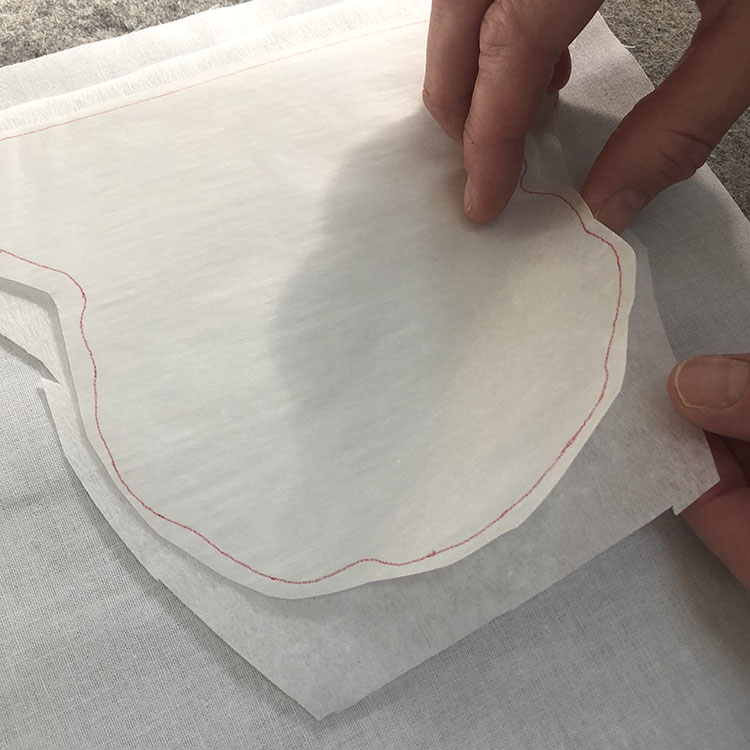

•
Here are the products we used. Pellon 805 Wonder-Under as our fusible web, Pellon 911FF Fusible Featherweight interfacing, and fine tip sharpies.
•

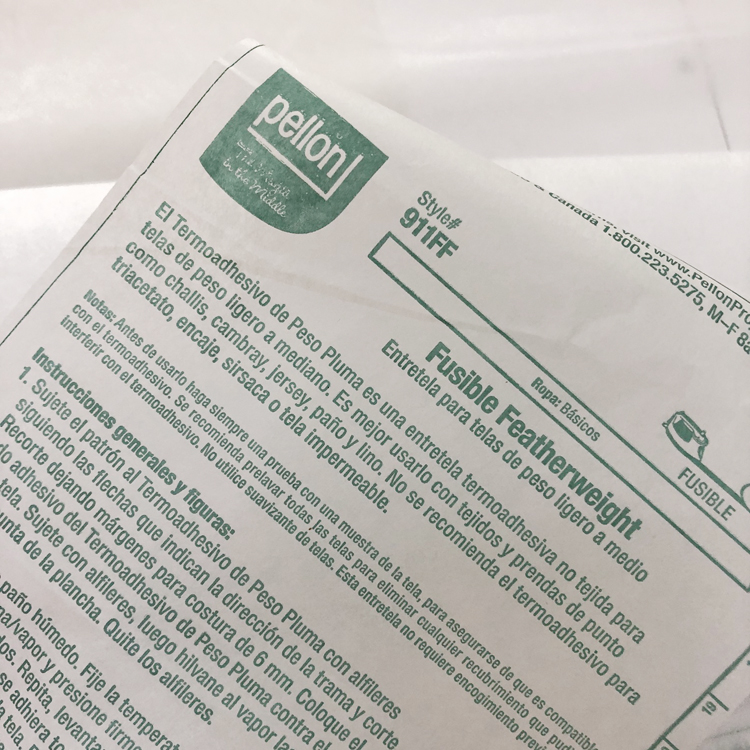
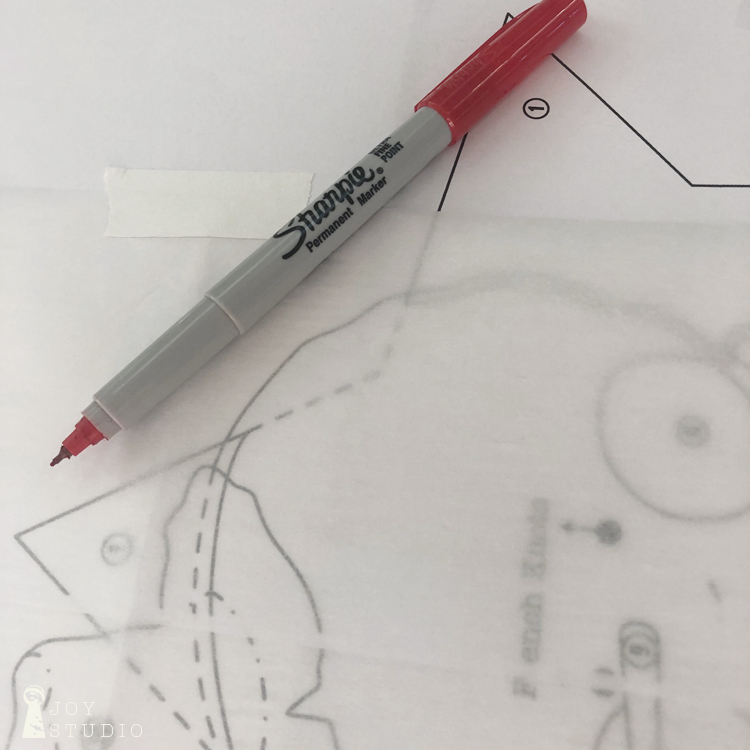
•
Once each glue piece is fused to its corresponding fabric you can move on to cutting out each appliqué. The more accurate you trim, the better the result. Use sharp scissors but not your “fabric only” pair as you will be cutting through the fusible web product. Here are the loose pieces organized and laid out that you will have before the final fuse to each block. Do not fuse together until week 2 for a helpful tip.
•

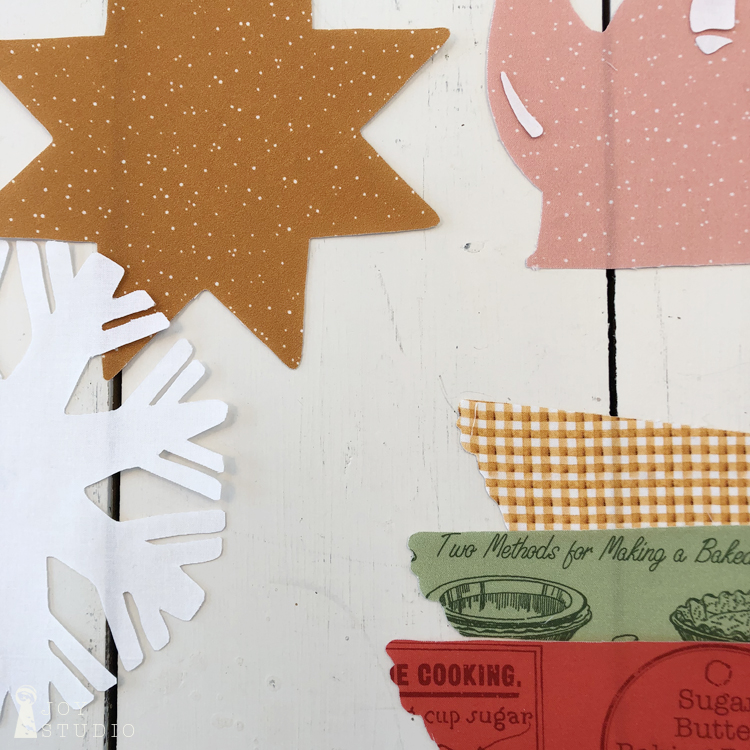
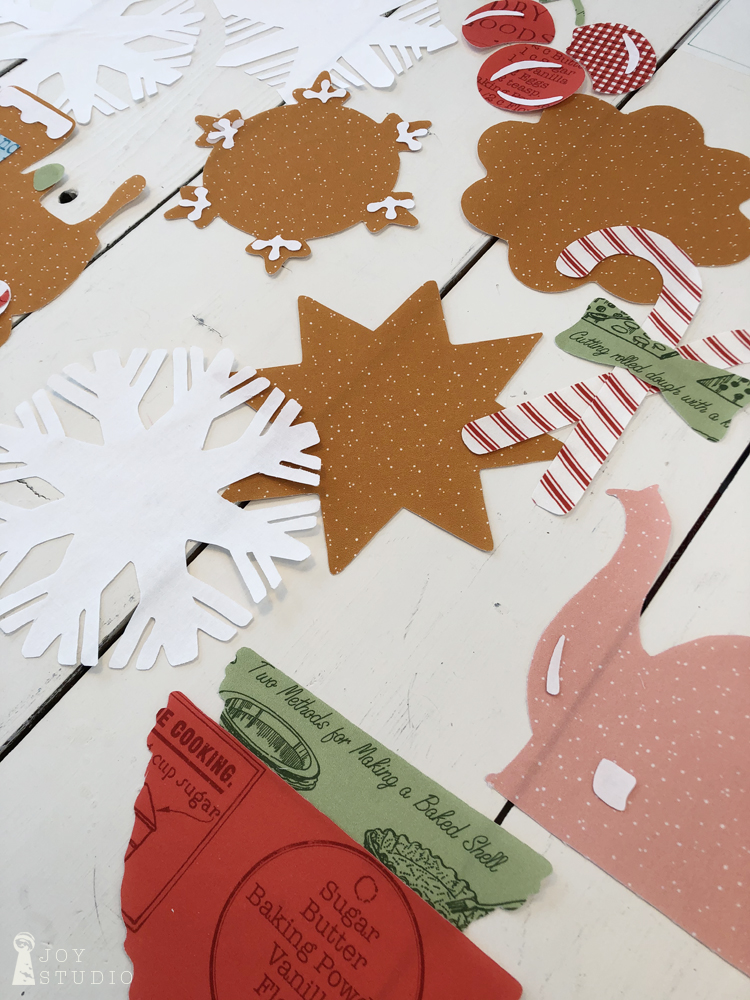
•
Next you will be cutting your block background fabrics, again starting with the Star Snowman. The sizes for each block are listed on your instruction sheets. Refer to the cover art for all of your fabric colors.
•

•
Note: There is one red fabric inconsistency listed from the original RBD storyboard as compared to our pattern. No worries! Either red fabric will work.
An optional but important step for week 2 will be creating “doors” for accurate piece placement. This will require any standard tracing paper you can get at your local art or craft store. This was not included on our original supply list. It comes in a variety of sizes. We used Strathmore Tracing Paper Pad, 300 Series, 9″ x 12″, 50 sheets. This will be plenty for this project.
•
We would love to see your progress photos on Facebook, Instagram and/or Pinterest so please let us know where in the comments.
Please tag us and follow on Instagram @jweckerfrisch and #snowalong whenever posting.
You can follow us on Facebook at Joy Studio News
And we’ve created a Sweet Snow A Long board on Pinterest.
Welcome everybody! See you next week!
Save
Save
Save
Save
Save
Save
Save
Save
Save
Save
Save
Save
by Great Joy Studio | Apr 27, 2020 | Quilting & Fabric
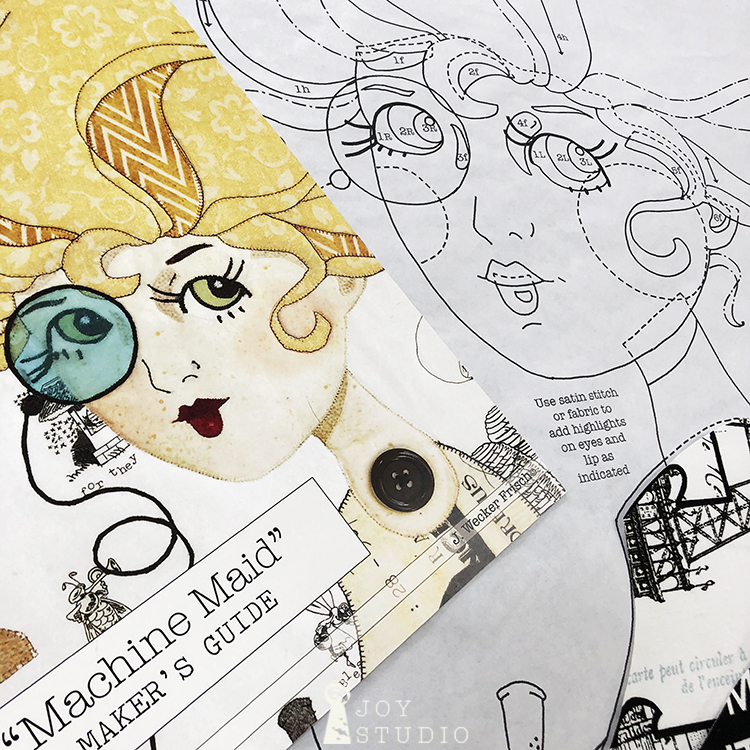
•
Hello to everyone at home. And sewing?
If you ever thought of making one of our large scale
She Who Sews
series for your studio, now would be a good time. Patterns are
half price
in the shop through May!
And we have fabric kits (limited supply) for
“Machine Maid”
as she originally appears on the pattern cover using our
Painters Palette,
and a few basics plus a Paris version using my
Couturiere Parisienne
fabrics from Riley Blake Designs. Both collections are available in shops now.
I am making her up in the later currently and for the first time ever actually and, I’m liking!!
Fabric background back story below.
•
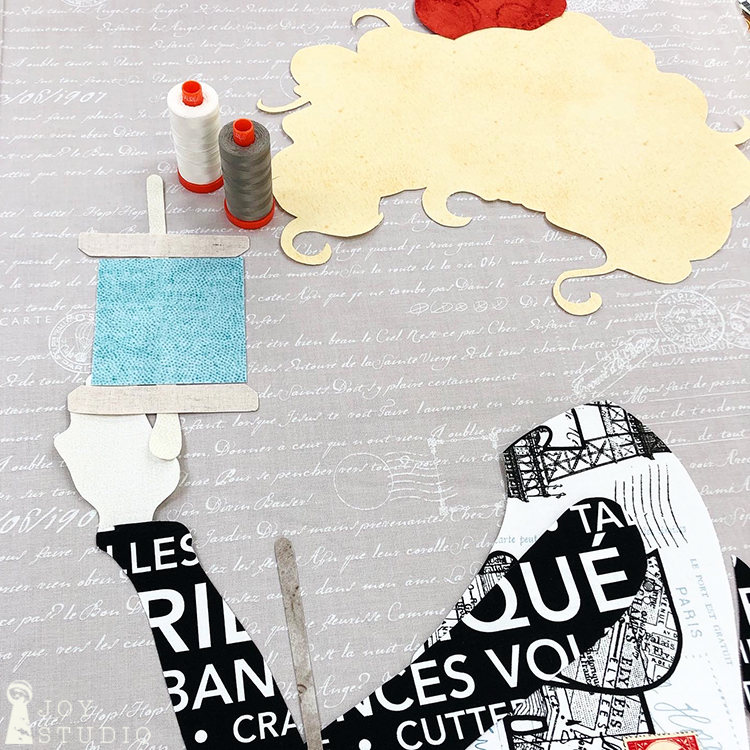

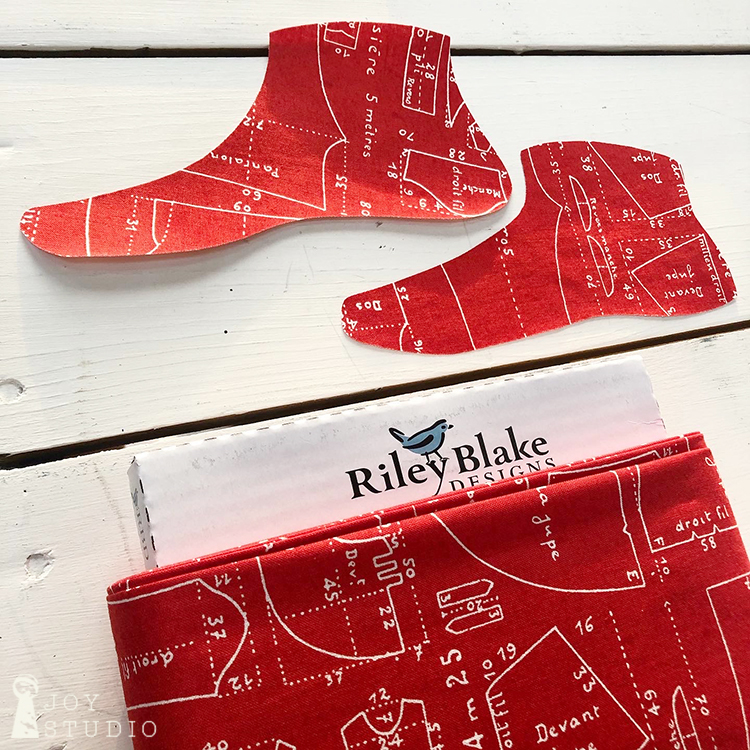
• Back story on the background text fabric is that the text was inspired by a little antique children’s book of prayers, in French! Sew sweet. Although I cannot interpret them, I was pleased to make this a part of the Couturiere Parisienne collection in lieu of my standard snippets of scripture. Parfait!
•
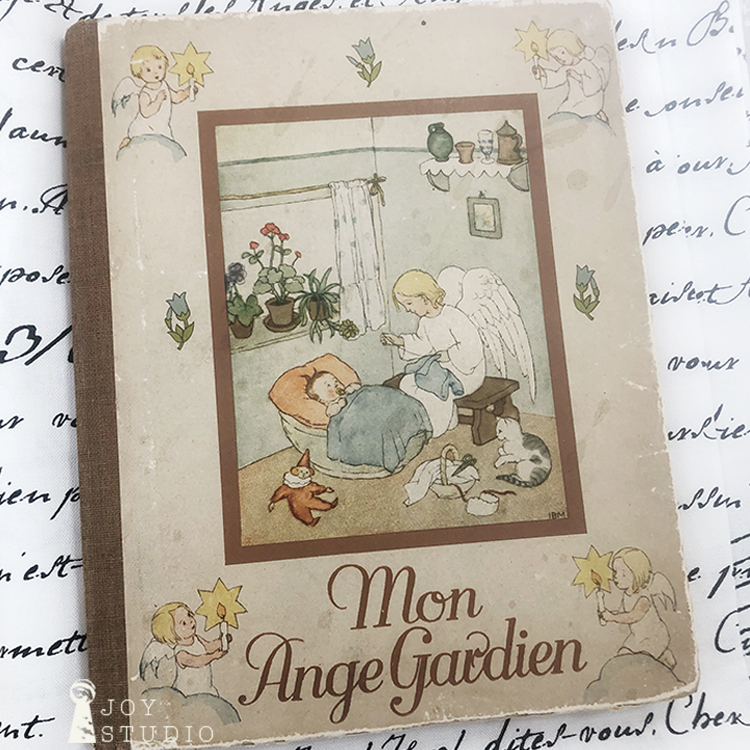

I’m sure we all agree that we are still in such a strange time but keep creating is my plan. And praying. It helps, right?!
•

Au revoir mon ami!
by Great Joy Studio | Feb 25, 2020 | Quilting & Fabric

•
Hat Shop Sew-A-Long, last post.
Adding your borders is all that is left to do!
This can be done in a couple of different ways however, I will only be describing how I actually, chose to finish this quilt.
Borders.
First up, the inner 1″ (finish size) black border. Make sure that your window blocks are squared up by trimming, measuring and placing your tracings over them before you add this border. Pay special attention to you last row of blocks so that all of the items will appear to be sitting on the bottom shelf of your window. It was necessary for me to trim mine about 1/2″. Then pin and sew with your 1/4″ seam.

•
Secondly sew on your gray borders to three sides. Top, right and left. I cut them 2″ for an inch and a half finish.
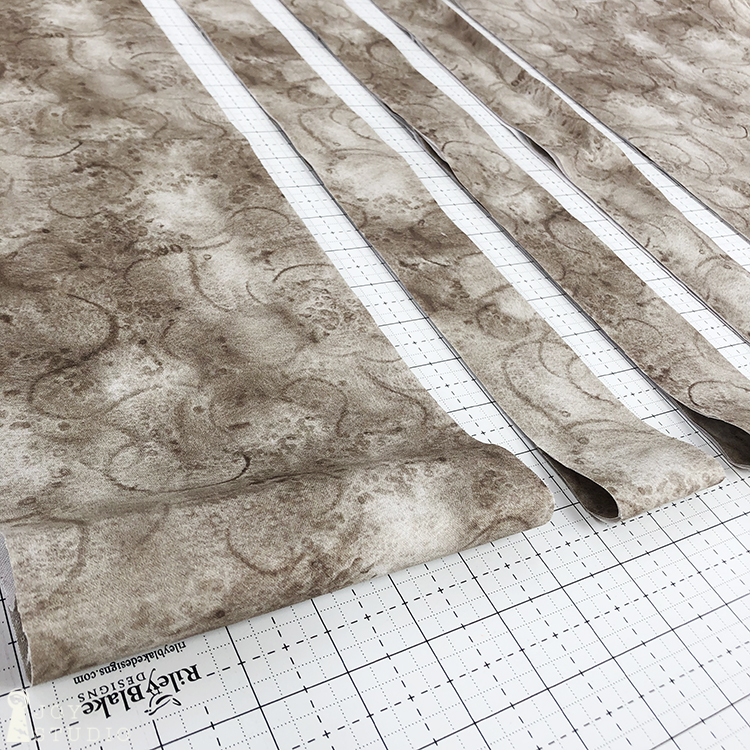
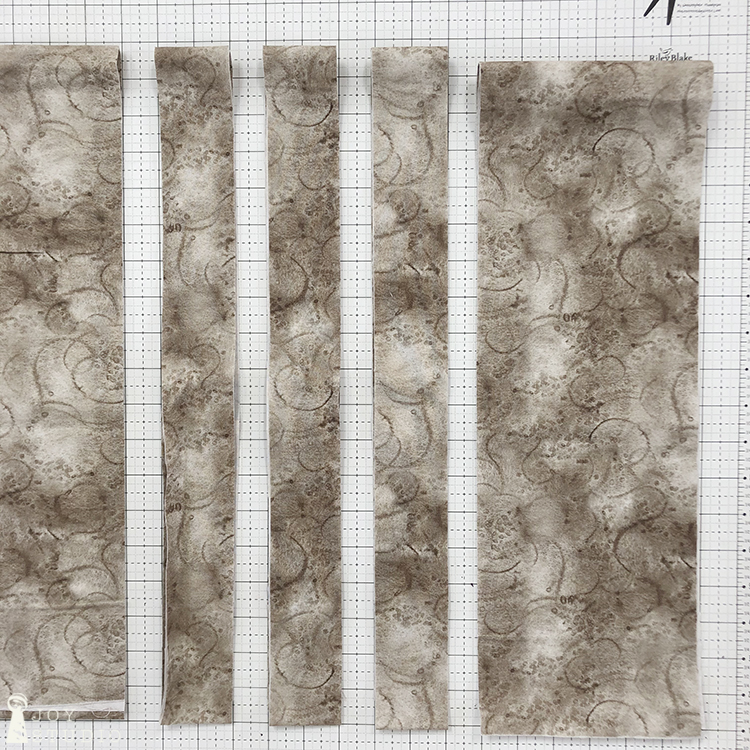
•
Bottom border.
Because I did not want to stitch around the appliquéd bricks after the borders were added to the quilt top, I simply strip pieced both of the borders together to treat the entire unit as the bottom border. Then I arranged the bricks (omitting one) making up the window sill approximately 1/4″ or so apart, evenly to fit directly under the black inner border. When I was satisfied with the placement, I fused the bricks to the gray and black unit, overlapping the seam slightly. This made stitching down the bricks much easier to manage than turning the entire quilt. I did however, stray from the pattern a bit. As you can see, the brick window ledge was confined to the bottom border only. You can choose to add two more bricks, one on each end after you add your side borders. I plan to do this as I show in the last photo in the segment below.




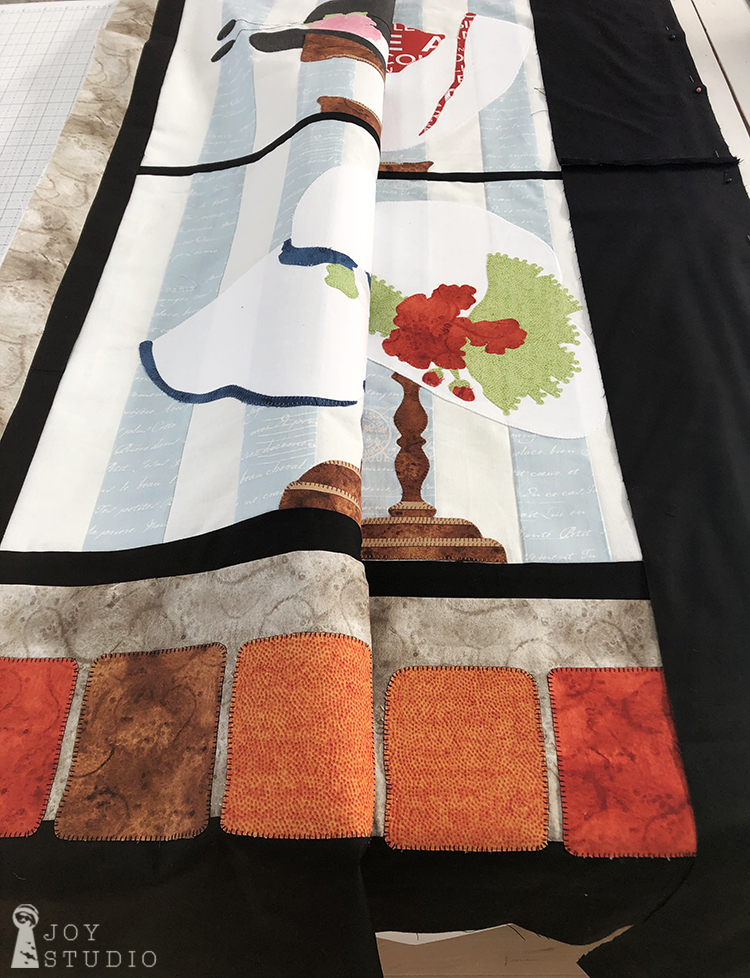
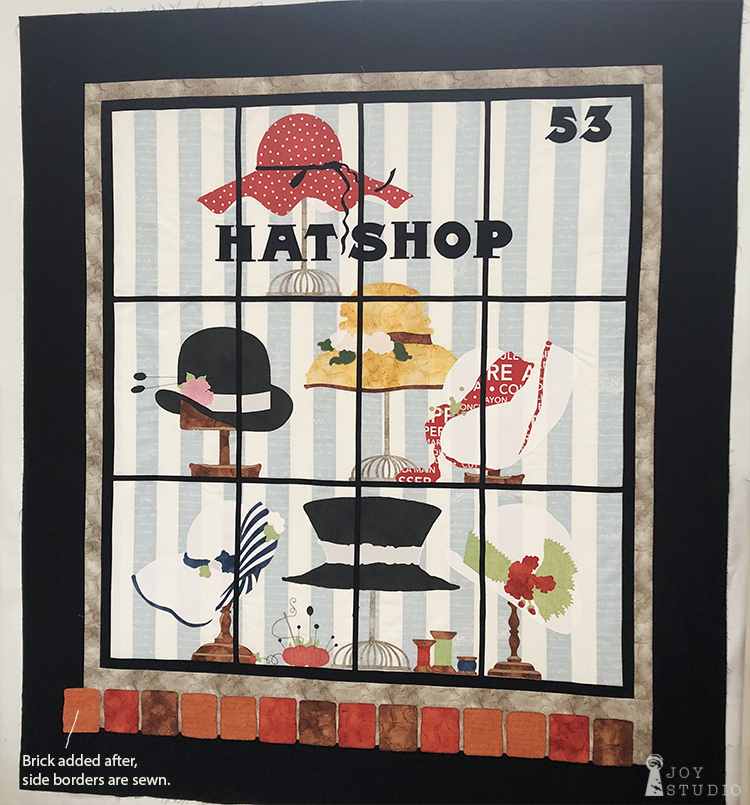
•
If you made it through the Hat Shop SAL, be proud of yourself! I was, and also quite surprised. This was a very intimidating challenge for me but I pushed through and learned much by making this project. Now my top is off to the quilter and I will share the finished piece with you soon.
Instagram @jweckerfrisch
Facebook Joy Studio

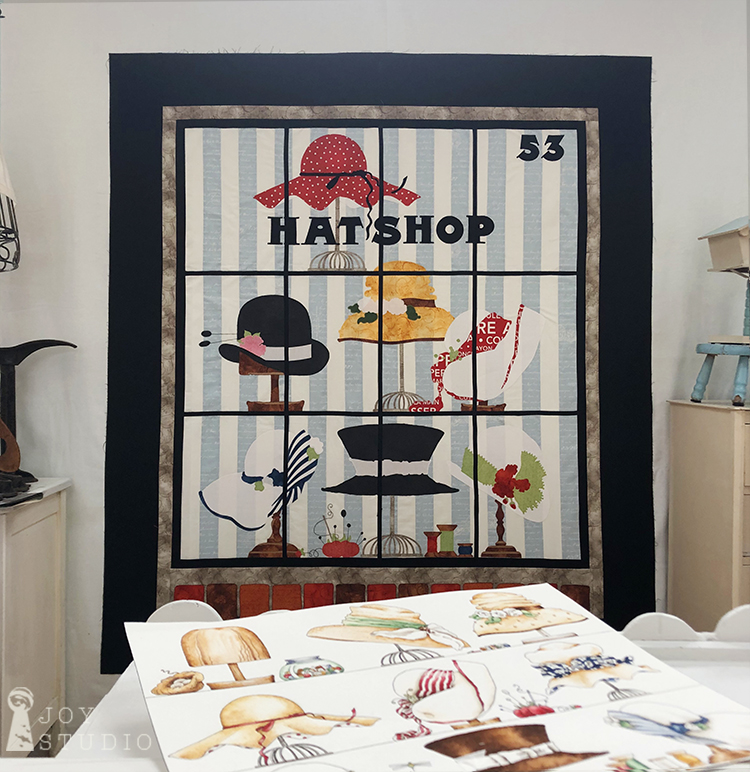
From ART to APPLIQUÉ.
Thanks for following and hopefully, sewing-a-long.
So long, for now.

by Great Joy Studio | Feb 18, 2020 | Quilting & Fabric
Hello Hatters!
We are coming into the Hat Shop home stretch now!!
Hopefully all of your blocks are fused, sewn down to secure your appliqué and you have added any embellishments or fancy stitching details that you care to create. Assuming this is the case, lets assemble your blocks.

•
Trimming the windowpane blocks.
Using your tracings that we made in Week 2, lay over each block one at a time. I started in row one and worked my way down. Carefully match your line drawing to your appliqué beneath and trim two sides (only) on the solid lines previously marked using the pattern. This was a scary step however, if you followed the pattern closely, items will meet up fairly well. So, trim all of your block sides in row one, then two and finally row three.


•
Sew each row together.
Once all four blocks in any given row are trimmed on each side (only), stitch the blocks together using a 1/4″ seam allowance. Peek underneath each one in an attempt to meet your corresponding appliqué pieces and then pin.

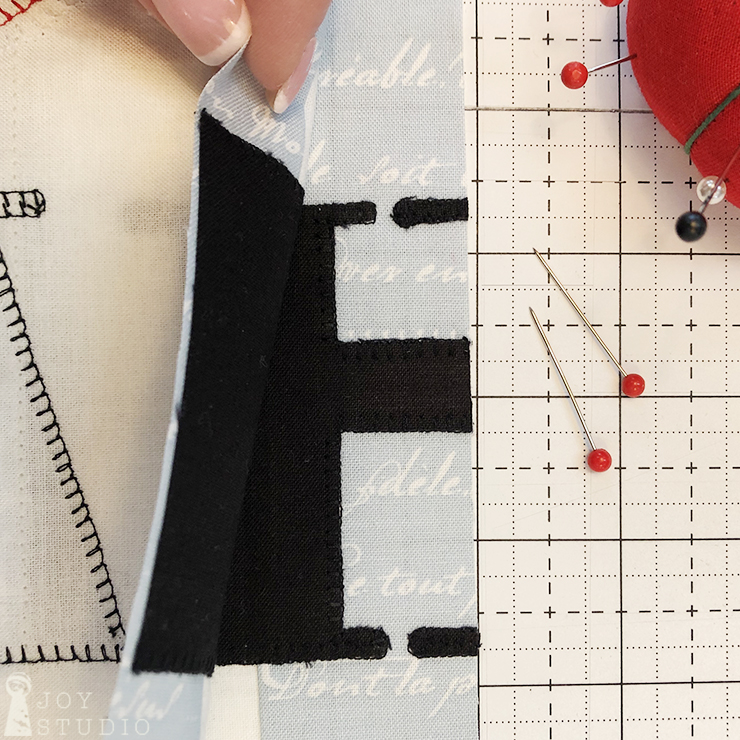
•
Your sewn rows will look something like the photos below.


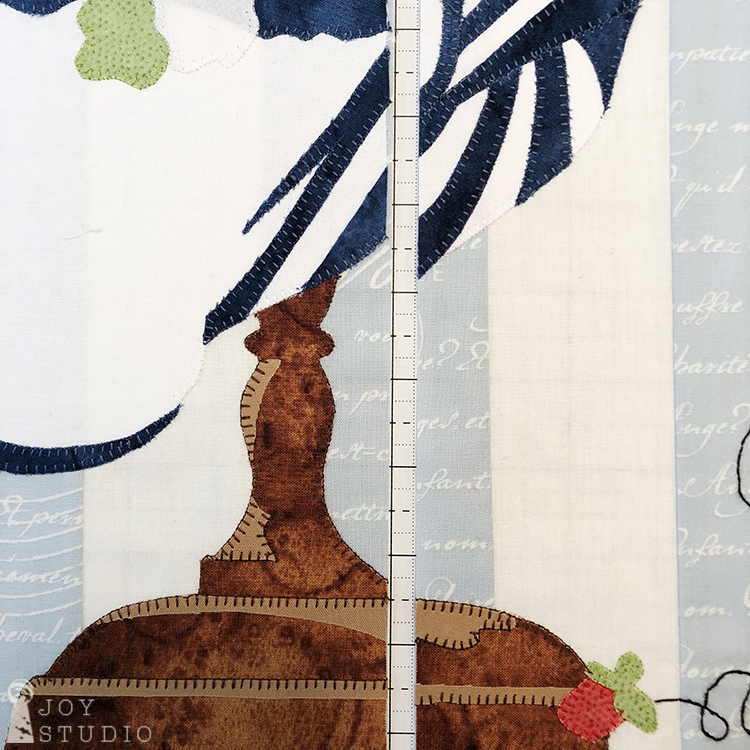

•
As you can see, mine are not perfect, not even sewn the same on each side however, two things I kept in mind as I pushed forward.
1) The window mullions will cover my seams and conceal any obvious errors.
2) I recently heard or read Jenny Doan remark, “finished is better than perfect.”
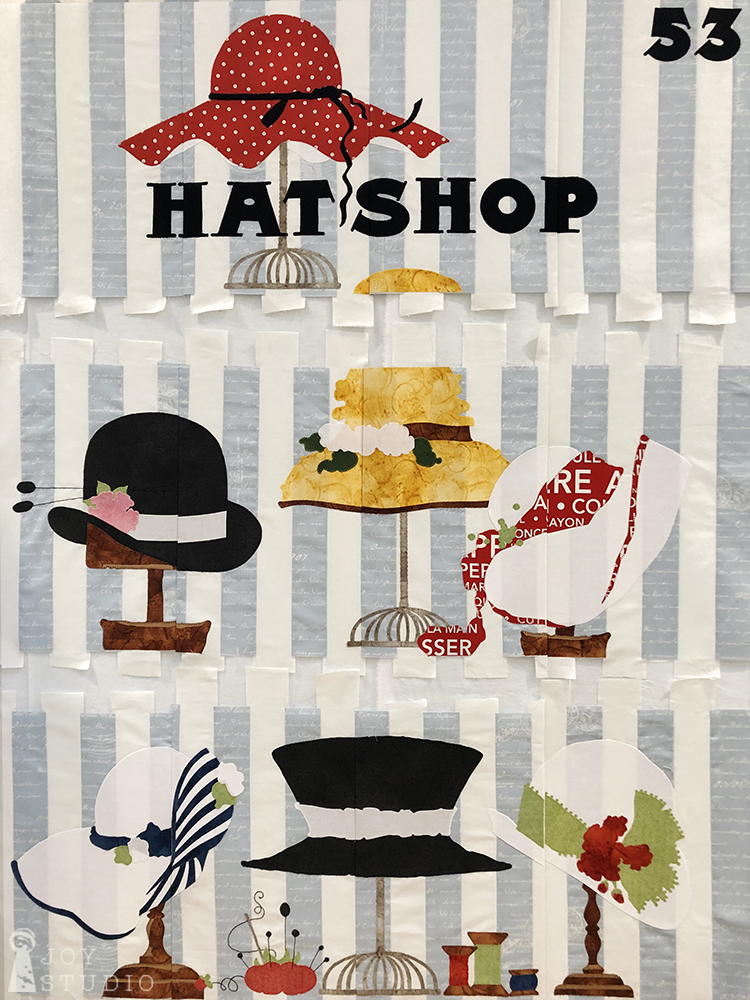
•
Next we trim again, top and bottom of each row. I wanted to see how my images lined up horizontally first so this is my suggestion. My rows ended up trimming to 16.5″ high, although the pattern cut line was at 17″. After you trim each row it’s time to attempt to match up the yellow hat appliqué and also the vertical background stripes. My primary focus was on the latter.

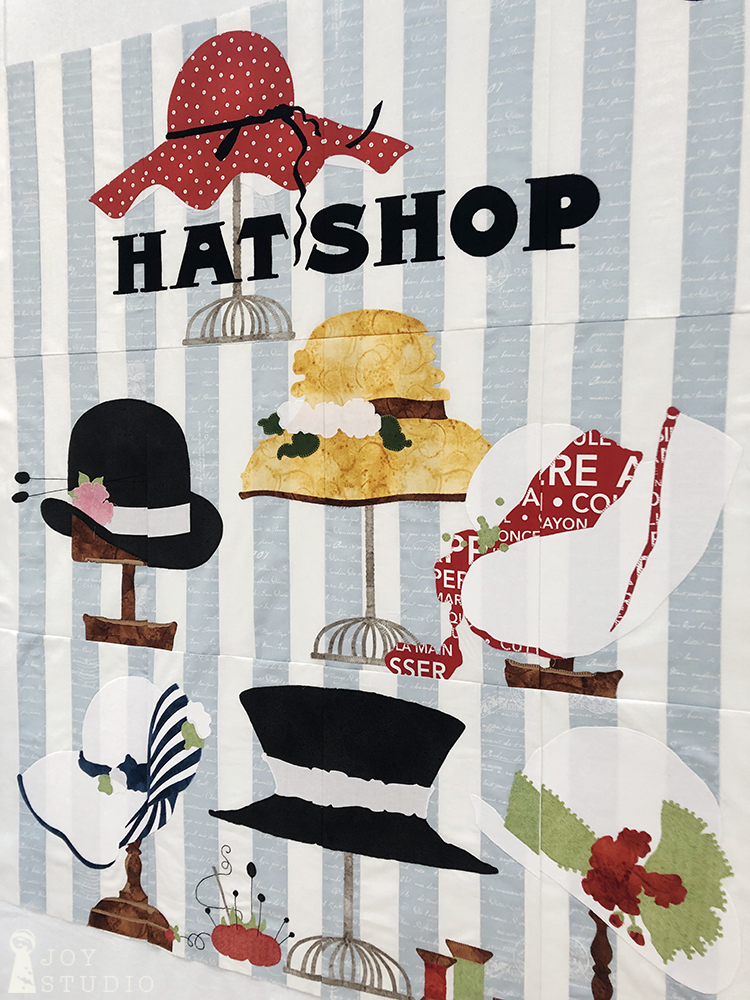
•
Making the window mullions.
We used Riley Blake Designs Confetti Cotton in black for the windowpane dividers. I did not have a half inch bias tape maker so I used the one just under. I cut six 7/8″ – 1″ strips selvage to selvage, not on the bias! We do not want these to stretch. Then I made my folded strips and pressed a double sided fusible tape on the back in which to cover my seams.
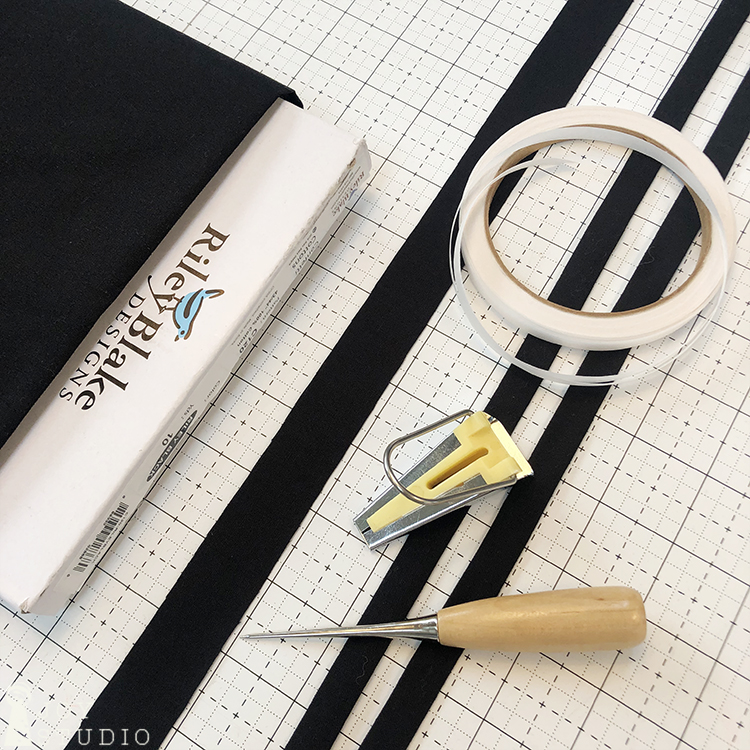
•
Next, press on your strips across the two horizontal seams. Then stitch the edges using a straight or decorative stitch.
Repeat the same for the three vertical dividers. I used the extra strip to piece the vertical strips as they were about 7- 9″ shy.


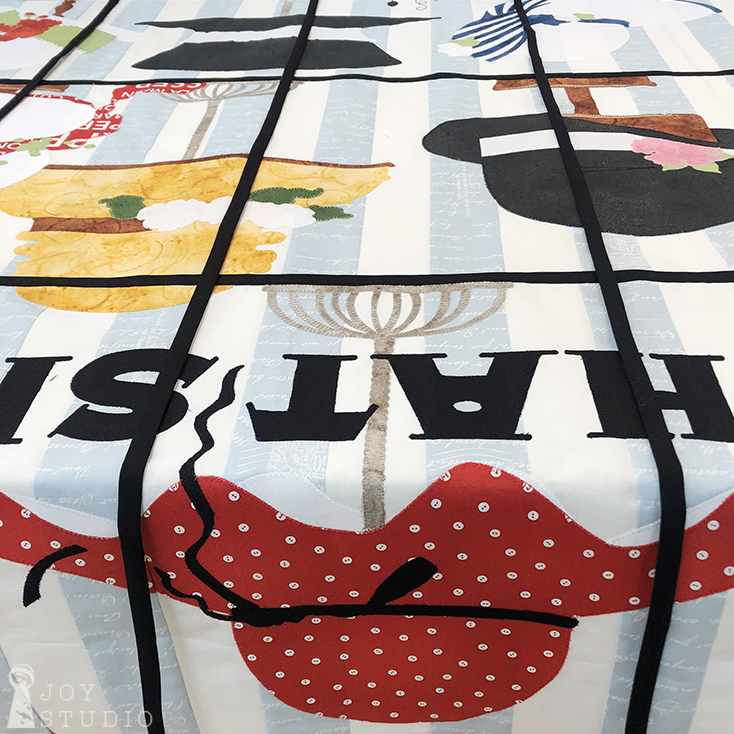
•
This sounds like a lot but really, it goes very quickly. In fact I’m sure that most of you will complete week 5 in a day! I did!!
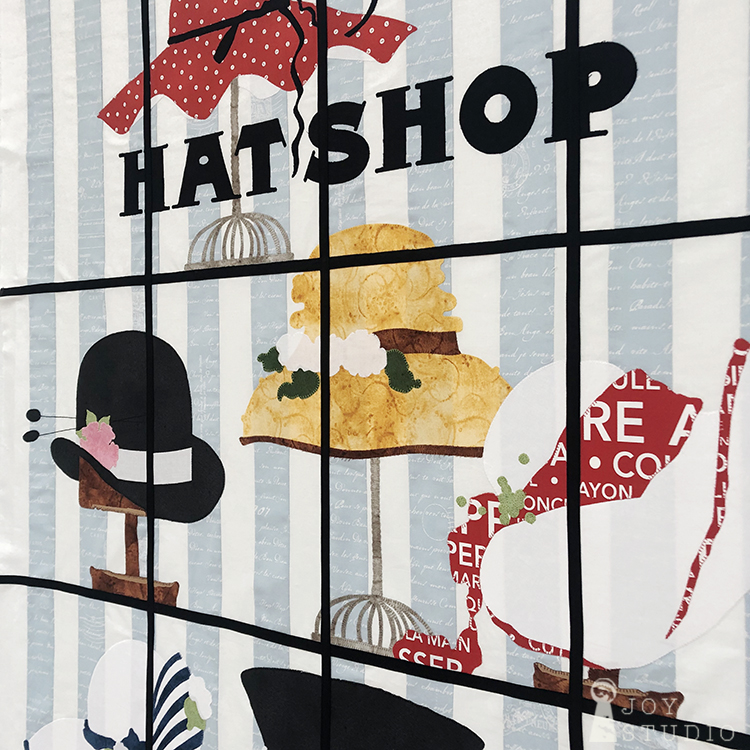
•
Next week, the borders and bricks. It will also wind up our sew-a-long.
If any of you would still like the BONUS hat, spools and button pattern, SHOW us your progress using #hatshopsewalong on your social media and leave me a comment or email. We’ll send just let us know:
janet@greatjoystudio.com

•
by Great Joy Studio | Feb 12, 2020 | Quilting & Fabric

Week 4, already?!!!!
We have been sewing down all of our appliqué pieces in rows 1 and 2. How about you?! We are still trying to figure out how we can patch our derby form correction so we will keep you posted in case you have the same problem.
To help us get a better view of our progress, we purchased materials to construct a much needed design wall. Refining is still underway but for now, it works. If you have the room I recommend one although I’m sure that most of you are way ahead of me on this already. We purchased 2, two inch thick, 4′ x 8′ sheets of styrofoam from a local building materials supplier and then covered them with flannel.
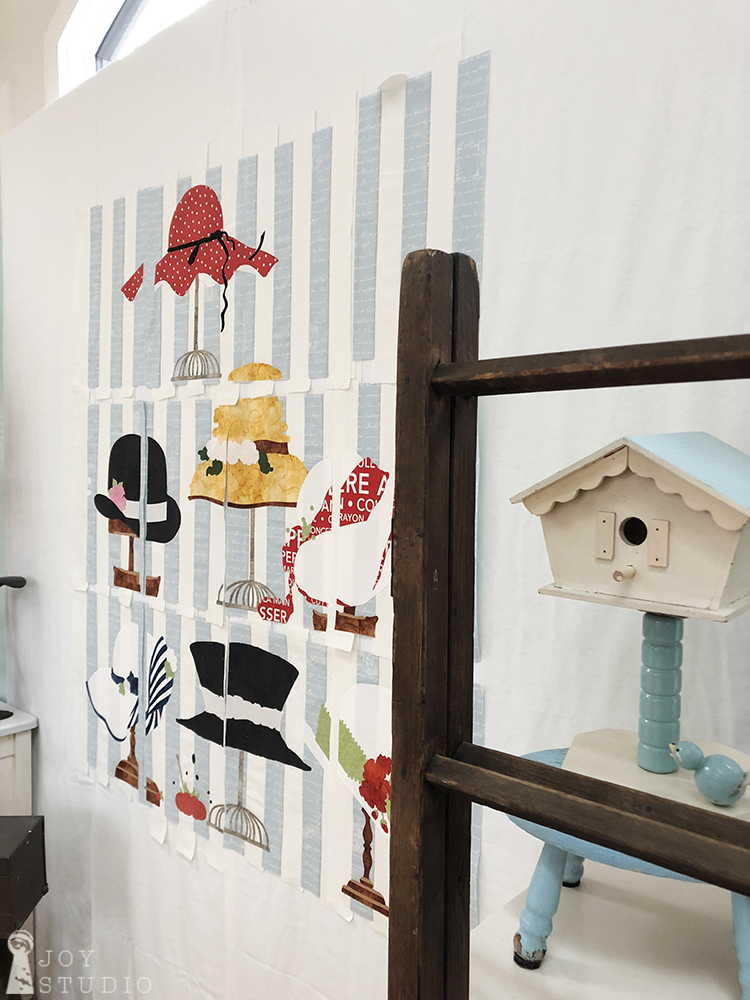
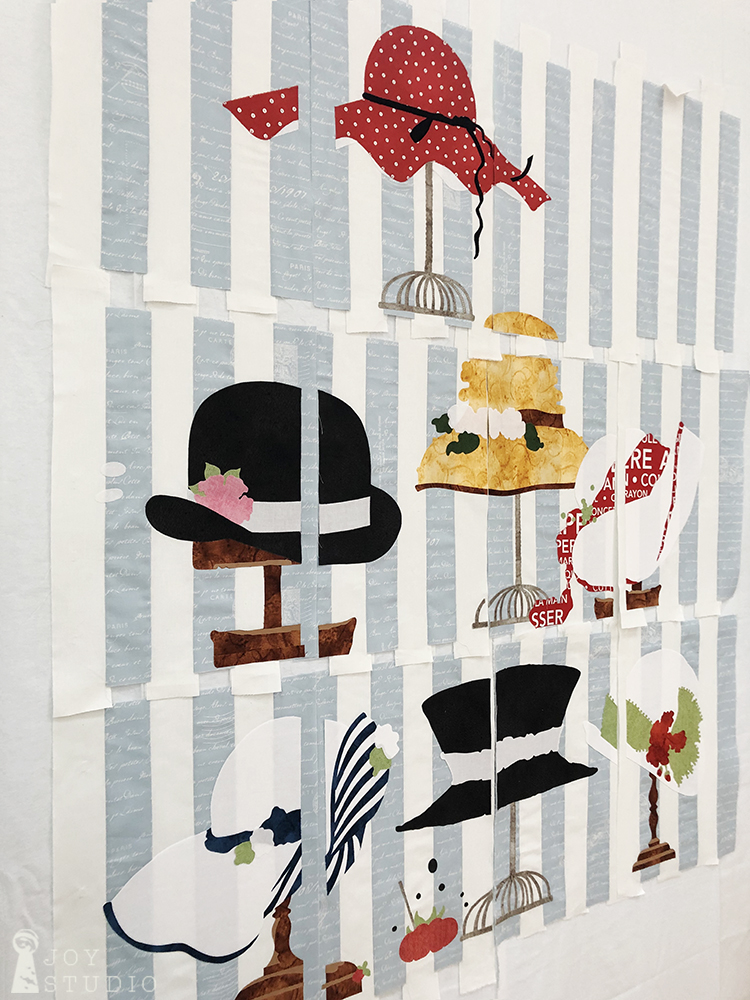
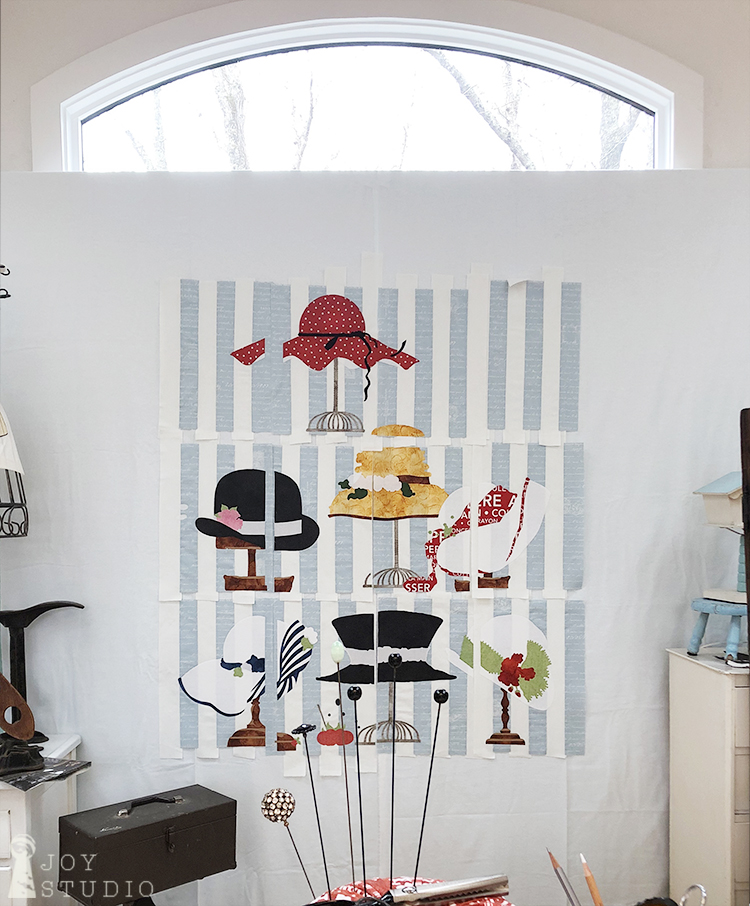
•
So, this week we finish the last four window blocks. Hurray!
Fusing row 3
Be sure to begin as we did last week by lining up your vertical striped background with the row above as you place your pattern tracing over each of your blocks. Review the images using this link and scroll down to Lining up the vertical stripes.
Likewise as in the week two, use your pattern tracing paper door method to begin placing and fusing all of your appliqué pieces. Review using this link and scroll down to Making an appliqué placement door.
Applique fusing sequence.
Repeating, the best way to determine what is fused first is by laying out all of your appliqué pieces on their corresponding blocks, underneath your tracing paper rendering, carefully checking with your pattern cover and technical illustration. Much like the red hat described in week 2 and the derby in week 3, the majority of the hats are fused in a similar order. Hat stand parts and then hat parts, However, hat one (left to right) took a bit more concentration figuring out the stripes. We cut a few of these pieces to go under each other, e.g. the hat brim stripe, which we added last. Shown here in these photos, the hat brim stripe covers the other angled stripe ends.
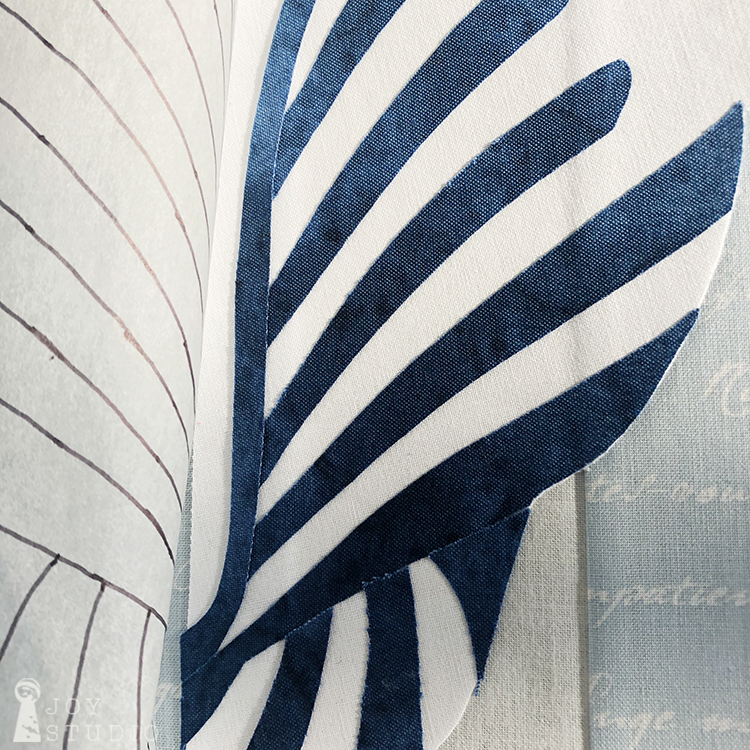

•
Here is how the rest of our row three hats look like before stitching, except for gray. I confess, jumped ahead to sew all like colors to avoid so many thread changes. You can notice that we swapped out black fabric for the pin heads to show up better or you can stitch these if you like.
Also, I cut all the green trim on last hat (below) to include all of the round beading detail. You can eliminate this if you do not wish to do that much extreme cutting and replace with French knots or some other type of decorative stitching or trim.

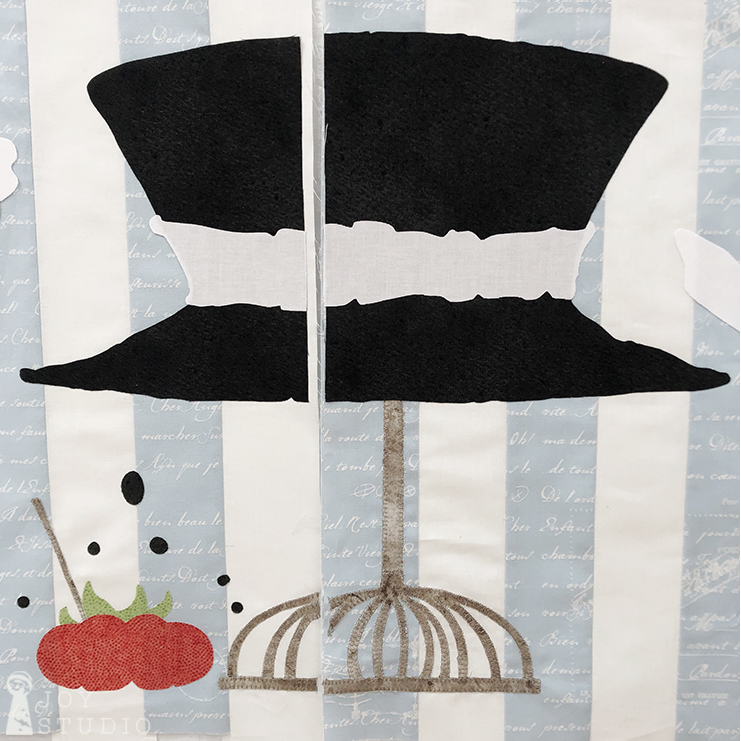

•
Have I mentioned lately that we are using my two new collections, Painters Palette and Couturiere Parisienne for this project? And we are loving the rich colors and painterly textures of these gorgeous fabrics from
Riley Blake Designs.
I hope you have enjoyed seeing our Hat Shop (Atelier de Chapellerie) windows progress and now, we would LOVE to see yours! So, if you would . . .
post a photo of your progress and use #hatshopsewalong on your social media channels
so we can find them,
FOLLOW here, on the blog:
greatjoystudio.com/blog
And/Or
@jweckerfrisch on Instagram or Joy Studio on Facebook
We will be happy to send you these CUTE add on appliqué and bonus hat pattern GIVEAWAY! Vintage spools, buttons and button jar.
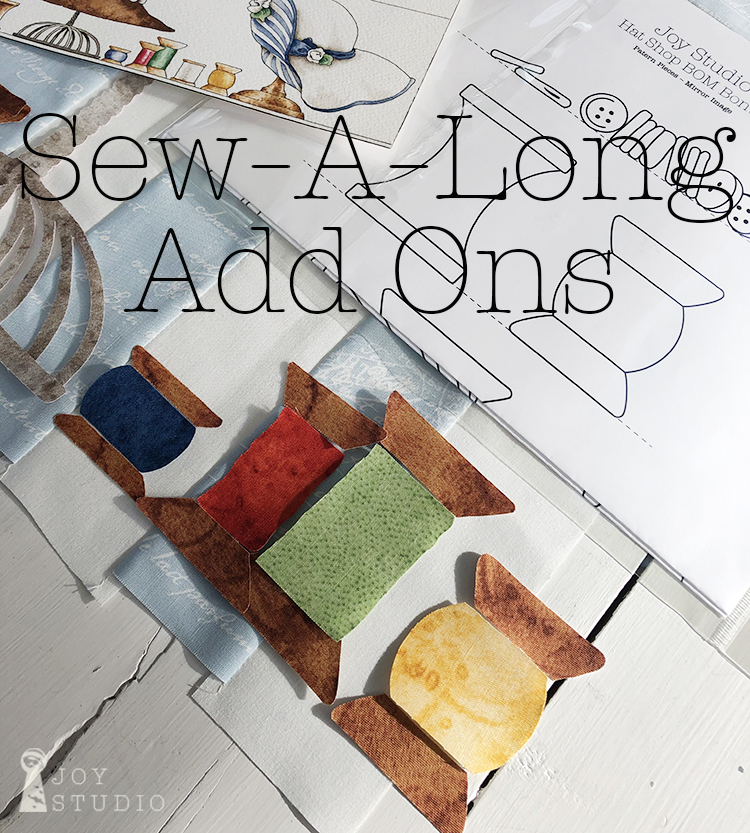

•
Drop me a line if you have any questions or comment here. janet@greatjoystudio.com
Happy hatting this week!






































































